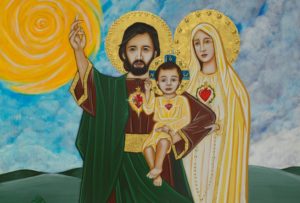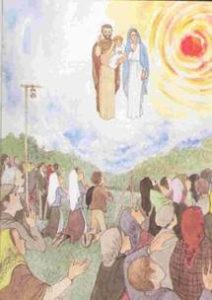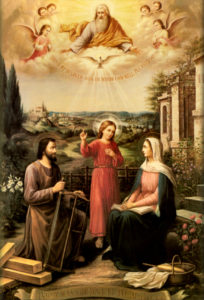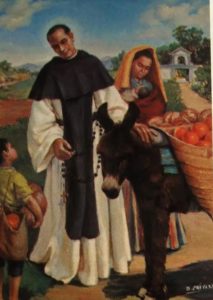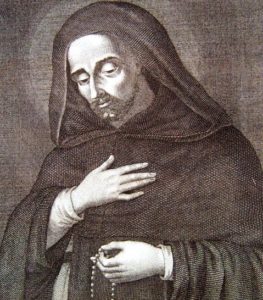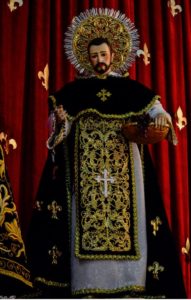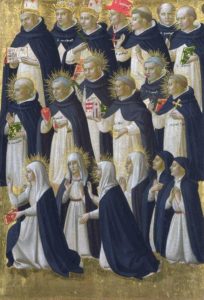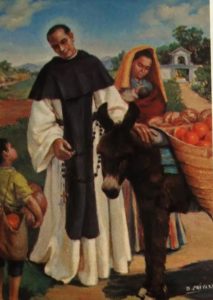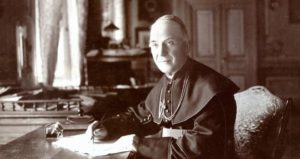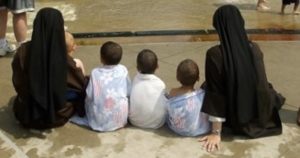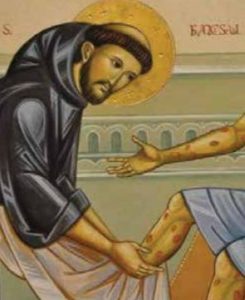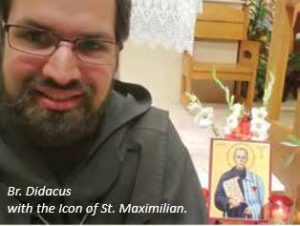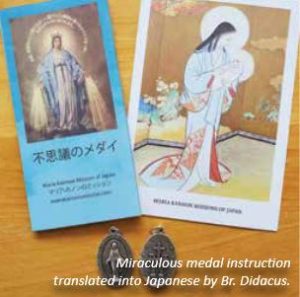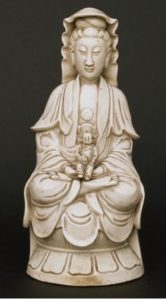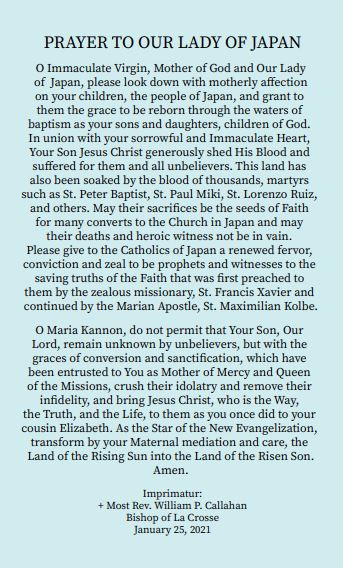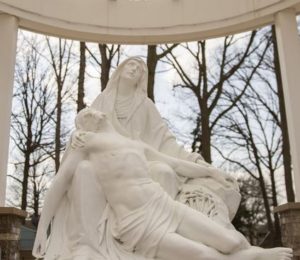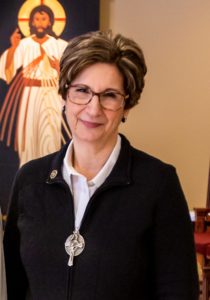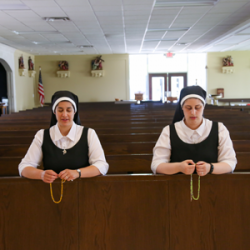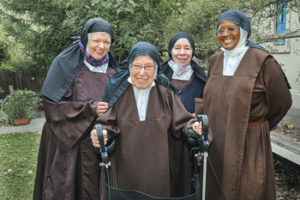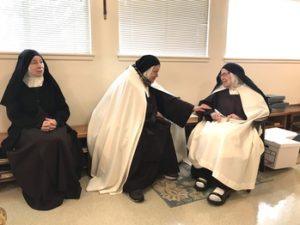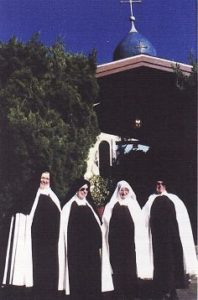 If there is one thing aspirants to religious life are today, it is sincere. Gone are the days of “automatic vocations” that every large Catholic family was expected to provide. Now we have young people who want to live totally for Christ and give up things commonly seen as necessities, oftentimes despite confusion or even derision from family.
If there is one thing aspirants to religious life are today, it is sincere. Gone are the days of “automatic vocations” that every large Catholic family was expected to provide. Now we have young people who want to live totally for Christ and give up things commonly seen as necessities, oftentimes despite confusion or even derision from family.
This desire for Christian perfection is obviously a good thing. If only more people had it, the world would be a much better place. Yet this desire, in itself very laudable, can be turned into something it was not intended to be.
Martin Luther did just that with his Augustinian Rule, seeing in it traps where others saw supports. He piled up imaginary obligations that left him agitatedly wondering whether he had offended God. This is scrupulosity, or the overestimation of evil and the underestimation of grace. Put another way, it is seeing sin where there is no sin, and where there may in fact be virtue.
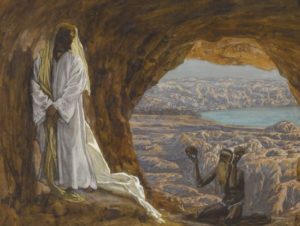 Satan’s best-known temptations are to make evil appear good in order to entice souls to commit acts (sins) for the sake of the apparent good. A lesser-known temptation is to frame good as evil, or something to be avoided.
Satan’s best-known temptations are to make evil appear good in order to entice souls to commit acts (sins) for the sake of the apparent good. A lesser-known temptation is to frame good as evil, or something to be avoided.
This temptation is especially acute for souls striving for perfection. Instead of trying to convince them directly that they should do what is actually wrong, Satan attempts to convince them that they have already done wrong or that the good they plan on doing is wrong. Discouragement can ensue, and, if not remedied, wholesale abandonment of the hunt for holiness might take happen.
Luther became so distraught that he left his community and the Church. He went from scrupulosity to Lutherosity, making his own quirks and anxieties the foundation of a novel code of conduct that even he lamented later because of its destructive effect on cultural cohesion.
This underscores the importance of not inventing obligations or holding oneself to an impossible standard. Doing so will cause distress, resentment, and even despair. Instead of giving up on holiness due to unmet imaginary claims on behavior, the better route is that of humble adherence to Church teachings, the (real) rule of one’s community, and the decision of superiors and directors.
Access or Excess?
Without even realizing it, personal obligations that are found nowhere in Scripture, Tradition, or even the rule of an order, can be held onto as being highly important. Even though this can be done in a sincere effort to please God, it actually pushes the soul from the path of holiness and happiness. In order to gain greater access to God, unreasonable expectations must be released.
Benedictine Father Hubert van Zeller wrote this simple and profound reflection in How to Find God: “Although the desire for God can never be excessive, the desire for the realization of this desire, can be.” On a theoretical level, the soul can never get enough of God, but on a practical level, there must be n acceptance of the soul’s capacity for God.
A peaceful and even amused dissatisfaction with what we’ve done for God, all the while trusting in His constant help for us to do better, is a good thing. However, an agitated dissatisfaction with what we’ve done, based on the implicit demand of being immediately free from any faults, is a bad thing.
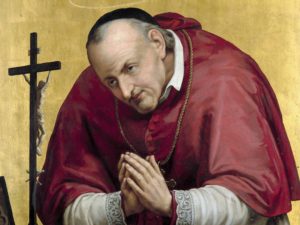 This is what Saint Alphonsus Liguori taught in his masterpiece, The True Spouse of Jesus Christ. He first states that “An ardent desire of perfection is the first means that a religious should adopt in order to acquire sanctity and to consecrate her whole being to God.” The founder of the Redemptorists then adds that “in the way of God, a Christian must either go forward and advance in virtue, or go backward and rush headlong into vice.”
This is what Saint Alphonsus Liguori taught in his masterpiece, The True Spouse of Jesus Christ. He first states that “An ardent desire of perfection is the first means that a religious should adopt in order to acquire sanctity and to consecrate her whole being to God.” The founder of the Redemptorists then adds that “in the way of God, a Christian must either go forward and advance in virtue, or go backward and rush headlong into vice.”
To those intimidated by such a challenge, Saint Alphonsus later states the following: “To be discouraged by the imperfections which you desire to correct, would be to yield to a great illusion of the devil.” He then asserts that “though, on our part, we ought to aspire to the highest sanctity that we can attain, we should be content with that degree of perfection which God gives us.”
It’s a matter of balance. Diligently striving for perfection is the mainstay of religious life, but inevitable challenges and setbacks should not be the occasion of discouragement. In fact, Saint Therese of Lisieux even said that the closer the soul gets to perfection, the further away it seems to be.
This might seem strange, but it makes sense. A proud man, because of his distance from God, thinks he has no need of improvement, while a humble man, because of his nearness to God, sees how imperfect he is compared to Absolute Perfection.
Booking a Flight to Clarity
Maintaining reasonable expectations of self is key to overcoming scrupulosity. Despite grand designs and goals that might be entertained, there is only so much that one can actually do. Theoretically, life’s possibilities are endless, but in reality, every person has limitations.
Limited people with limited resources and limited opportunities should be able to take their own active sincerity and be at peace with it. Achieving Peace of Heart by Father Narciso Irala, S.J., is a great help for making this happen. Other helpful books include The True Spouse of Jesus Christ by Saint Alphonsus Liguori, Story of a Soul by Saint Therese, Introduction to the Devout Life by Saint Francis de Sales, and volume 2 of Ven. Louis of Granada’s Summa of the Christian Life.
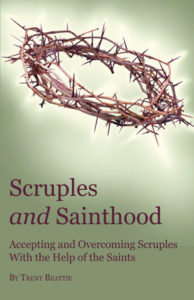 While these books include sections directed toward the scrupulous, there are not many entire books on the topic. My own Scruples and Sainthood is a more recent installment meant to fill this void.
While these books include sections directed toward the scrupulous, there are not many entire books on the topic. My own Scruples and Sainthood is a more recent installment meant to fill this void.
Like people’s achievements in life, there is only so much a book can do, but this limited good should not be overlooked for the sake of impossible perfection. Real perfection in a soul is comprised of continual efforts for perfection, despite glitches and miscues that take place.
The biggest aid to real perfection is the guidance, not of a book, but of a director. Following the advice of another is prescribed as the great remedy for overcoming nagging doubts about one’s soul. An outside assessment of the situation by someone familiar with scrupulosity should yield a more accurate, purposeful, and joyful state of mind.
It is even possible that one’s director will assign the enjoyment of life as a penance. Along those lines, here’s a short list that can be preceded by the words “You might be scrupulous if…”
You’ve been told the “sins” you confessed were actually virtues.
You’ve uttered these words: “Bless me Father, for I have sinned. It’s been twenty minutes since my last confession.”
You’ve been so concerned about taking the Lord’s name in vain that all the references to God in your prayer books have been scratched out and “Gosh” has been written in.
Humor is a great aid to holiness, and can even be an indication of it. Someone who has a sense of humor is not caught up in unreasonable expectations, but is able to see how things really are. He recognizes the contrast between how things ought to be and how they have actually played out.
Let us, by all means, be sincere, but not so sincere that we see sin in our sincerity. Simple sincerity is brought about by obedience to Church teaching, the rule and one’s director, while “sinful sincerity” is brought about by overestimating the negatives, underestimating the positives, and trying to improve the situation alone.
________________________________________________________________________
Trent Beattie is the author of Scruples and Sainthood: Accepting and Overcoming Scrupulosity with the Help of the Saints, from Loreto Publications (LoretoPubs.org).
Like this:
Like Loading...
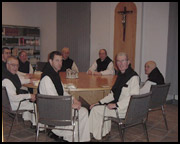 A gentleman wrote recently about his visit to Our Lady of Calvary Abbey, a Trappist/Cistercian monastery in Rogersville, New Brunswick, that he called “a spiritually powerful place with lovely property and facilities.” Prayer, liturgical and personal, manual work, and spiritual reading (lectio divina) are the characteristic activities of their daily life at Calvary abbey from their beginnings 1902 till the present.
A gentleman wrote recently about his visit to Our Lady of Calvary Abbey, a Trappist/Cistercian monastery in Rogersville, New Brunswick, that he called “a spiritually powerful place with lovely property and facilities.” Prayer, liturgical and personal, manual work, and spiritual reading (lectio divina) are the characteristic activities of their daily life at Calvary abbey from their beginnings 1902 till the present.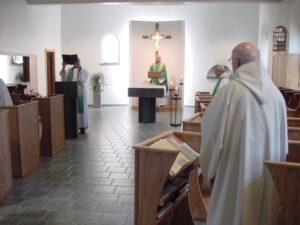 In a world given over to the frenetic pursuit of diversions and distractions, evasions and pretension, the Cistercian monastery tries to be an oasis of truth. Here, the soul, longing to live, learns patiently through a whole lifetime, the secret way of the heart. The monks try to follow a trusty guide in the Rule of Saint Benedict.
In a world given over to the frenetic pursuit of diversions and distractions, evasions and pretension, the Cistercian monastery tries to be an oasis of truth. Here, the soul, longing to live, learns patiently through a whole lifetime, the secret way of the heart. The monks try to follow a trusty guide in the Rule of Saint Benedict.